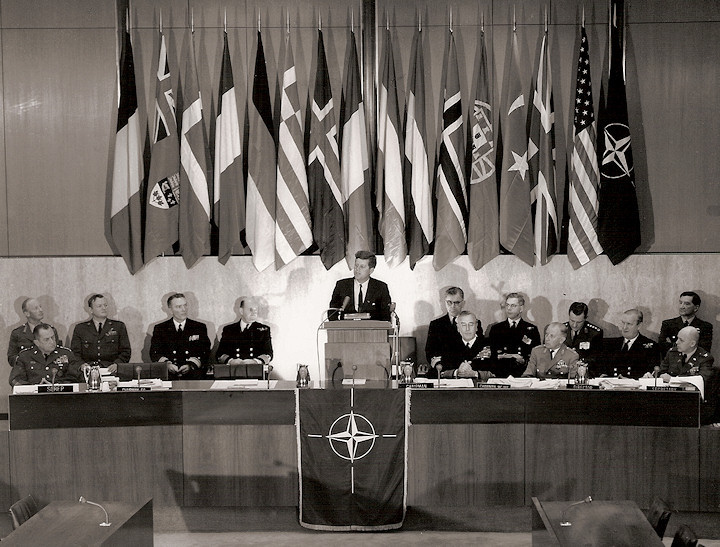
From James Goldgeier, International Herald Tribune: In awarding this year’s Nobel Peace Prize to the European Union, the Nobel committee quite rightly noted the E.U.’s critical role in Europe’s transformation “from a Continent of war to a Continent of peace.” But as Europeans celebrate what they have accomplished since World War II, they should not forget that without the United States and NATO, they could not have been successful. . . .
Founded in 1949, an alliance built among the United States, Canada and Western Europe guaranteed Western Europeans that they would not be overrun by Soviet tanks. During the four decades of the Cold War, the knowledge that the United States would come to their defense allowed the Europeans to focus on building their miracle. . . .
And NATO led the way after the Cold War ended. First the Atlantic Alliance developed the Partnership for Peace program, designed to ensure that the militaries in those formerly Communist countries understood what it meant to build a democratic society. And then the alliance provided a path to membership for a dozen countries in the region, providing hope to nations that had been forced to live under autocratic rule that they could live in peace and that their peoples would know their individual liberties would be protected. . . .
Then there is Bosnia. The war in the early 1990s raged for nearly four years. The United States hoped that the European Union would stop the carnage inflicted by the Serbian government and its allies, but the organization had neither the will nor the capability to do so. In 1995, the United States led NATO to end the war and help promote the peace. It was not the European Union that put an end to the most horrific violence since World War II. It was not the European Union that ended a genocide reminiscent of the crimes committed by the Nazis. It was NATO, just as it was four years later when the Kosovar Albanians were under assault by the Serb leader Slobodan Milosevic.
James Goldgeier is dean of the School of International Service at American University. (photo: historyplace)
Image: historyplace%2010%2016%2012%20president-nato-address.jpg
